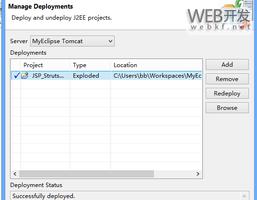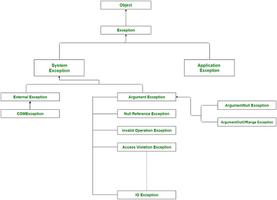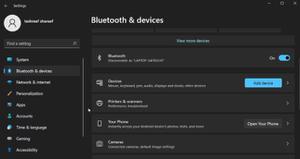TAP全局异常处理程序
此代码引发异常。是否可以定义一个将捕获它的应用程序全局处理程序?
string x = await DoSomethingAsync();使用.net 4.5 / WPF
回答:
如果我理解正确,这实际上是一个 好 问题。我最初投票决定将其关闭,但现在撤回了我的投票。
重要的是要了解如何将async Task方法内引发的异常传播到方法外。最重要的是,处理任务完成的代码需要 遵守 此类异常。
例如,这是一个简单的WPF应用程序,我在NET 4.5.1上:
using System;using System.Threading.Tasks;
using System.Windows;
namespace WpfApplication_22369179
{
public partial class MainWindow : Window
{
Task _task;
public MainWindow()
{
InitializeComponent();
AppDomain.CurrentDomain.UnhandledException +=
CurrentDomain_UnhandledException;
TaskScheduler.UnobservedTaskException +=
TaskScheduler_UnobservedTaskException;
_task = DoAsync();
}
async Task DoAsync()
{
await Task.Delay(1000);
MessageBox.Show("Before throwing...");
GCAsync(); // fire-and-forget the GC
throw new ApplicationException("Surprise");
}
async void GCAsync()
{
await Task.Delay(1000);
MessageBox.Show("Before GC...");
// garbage-collect the task without observing its exception
_task = null;
GC.Collect(GC.MaxGeneration, GCCollectionMode.Forced);
}
void TaskScheduler_UnobservedTaskException(object sender,
UnobservedTaskExceptionEventArgs e)
{
MessageBox.Show("TaskScheduler_UnobservedTaskException:" +
e.Exception.Message);
}
void CurrentDomain_UnhandledException(object sender,
UnhandledExceptionEventArgs e)
{
MessageBox.Show("CurrentDomain_UnhandledException:" +
((Exception)e.ExceptionObject).Message);
}
}
}
一旦ApplicationException被抛出,它就不会被观察到。无论是TaskScheduler_UnobservedTaskException也CurrentDomain_UnhandledException被调用。异常保持hibernate状态,直到_task对象被等待或等待。在上面的示例中,它从未被观察到,
。然后,将 吞噬 此异常。
AppDomain.CurrentDomain.UnhandledException可以通过ThrowUnobservedTaskExceptions在app.config以下位置进行配置来启用旧的.NET
4.0行为:在该行为中会触发事件并导致应用崩溃。
<configuration> <runtime>
<ThrowUnobservedTaskExceptions enabled="true"/>
</runtime>
</configuration>
以这种方式启用 后
,在异常被垃圾收集之后,而不是在引发异常的地方,AppDomain.CurrentDomain.UnhandledException仍将被触发。
__TaskScheduler.UnobservedTaskException
Stephen Toub在他的“ .NET
4.5中的任务异常处理”博客文章中对此行为进行了描述。有关任务垃圾收集的部分在帖子评论中进行了描述。
方法就是这种情况 。对于
方法(通常用于事件处理程序)而言,情况大不相同。让我们以这种方式更改代码:
public MainWindow(){
InitializeComponent();
AppDomain.CurrentDomain.UnhandledException += CurrentDomain_UnhandledException;
TaskScheduler.UnobservedTaskException += TaskScheduler_UnobservedTaskException;
this.Loaded += MainWindow_Loaded;
}
async void MainWindow_Loaded(object sender, RoutedEventArgs e)
{
await Task.Delay(1000);
MessageBox.Show("Before throwing...");
throw new ApplicationException("Surprise");
}
因为async
void没有Task可保留的引用(因此以后可能没有观察到或垃圾回收的内容)。在这种情况下,立即在当前同步上下文上引发异常。对于一个WPF应用程序,Dispatcher.UnhandledException会先启用,然后Application.Current.DispatcherUnhandledException,然后AppDomain.CurrentDomain.UnhandledException。最后,如果没有处理这些事件(EventArgs.Handled未设置为true),则无论ThrowUnobservedTaskExceptions设置如何,应用都会崩溃。TaskScheduler.UnobservedTaskException是
在这种情况下被解雇,出于同样的原因:没有Task。
以上是 TAP全局异常处理程序 的全部内容, 来源链接: utcz.com/qa/408532.html








